Prakhar Kaushik
EigenLoRAx: Recycling Adapters to Find Principal Subspaces for Resource-Efficient Adaptation and Inference
Feb 07, 2025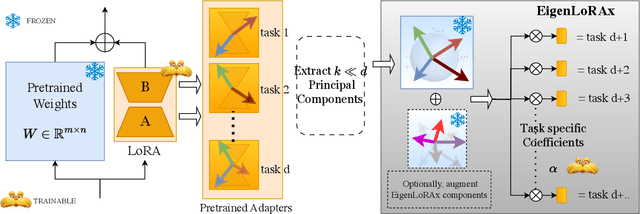
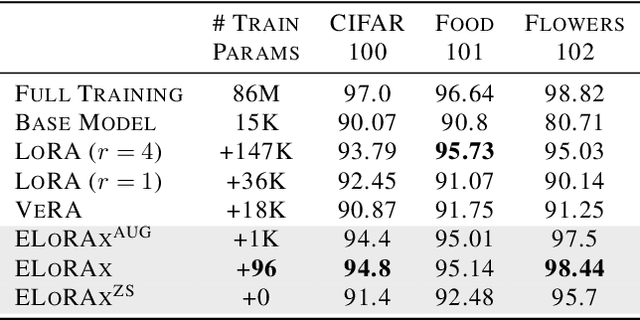
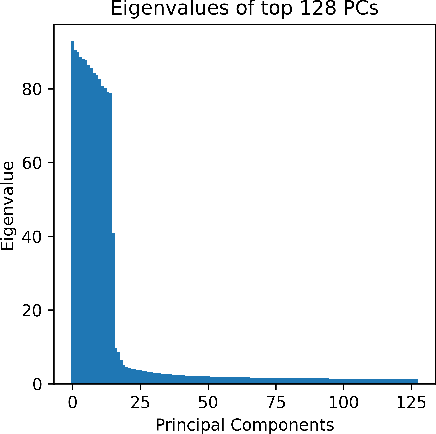
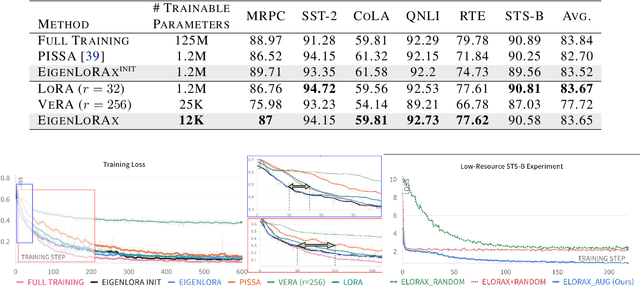
Abstract:The rapid growth of large models has raised concerns about their environmental impact and equity in accessibility due to significant computational costs. Low-Rank Adapters (LoRA) offer a lightweight solution for finetuning large models, resulting in an abundance of publicly available adapters tailored to diverse domains. We ask: Can these pretrained adapters be leveraged to further streamline adaptation to new tasks while addressing these challenges? We introduce EigenLoRAx, a parameter-efficient finetuning method that recycles existing adapters to create a principal subspace aligned with their shared domain knowledge which can be further augmented with orthogonal basis vectors in low-resource scenarios. This enables rapid adaptation to new tasks by learning only lightweight coefficients on the principal components of the subspace - eliminating the need to finetune entire adapters. EigenLoRAx requires significantly fewer parameters and memory, improving efficiency for both training and inference. Our method demonstrates strong performance across diverse domains and tasks, offering a scalable for edge-based applications, personalization, and equitable deployment of large models in resource-constrained environments.
Gaussian Scenes: Pose-Free Sparse-View Scene Reconstruction using Depth-Enhanced Diffusion Priors
Nov 24, 2024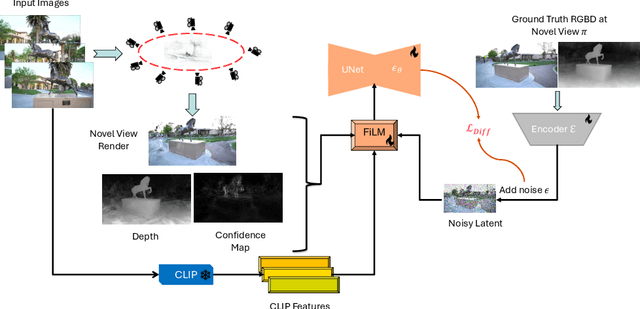

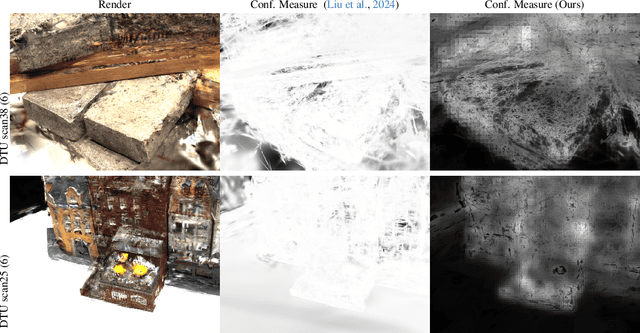

Abstract:In this work, we introduce a generative approach for pose-free reconstruction of $360^{\circ}$ scenes from a limited number of uncalibrated 2D images. Pose-free scene reconstruction from incomplete, unposed observations is usually regularized with depth estimation or 3D foundational priors. While recent advances have enabled sparse-view reconstruction of unbounded scenes with known camera poses using diffusion priors, these methods rely on explicit camera embeddings for extrapolating unobserved regions. This reliance limits their application in pose-free settings, where view-specific data is only implicitly available. To address this, we propose an instruction-following RGBD diffusion model designed to inpaint missing details and remove artifacts in novel view renders and depth maps of a 3D scene. We also propose a novel confidence measure for Gaussian representations to allow for better detection of these artifacts. By progressively integrating these novel views in a Gaussian-SLAM-inspired process, we achieve a multi-view-consistent Gaussian representation. Evaluations on the MipNeRF360 dataset demonstrate that our method surpasses existing pose-free techniques and performs competitively with state-of-the-art posed reconstruction methods in complex $360^{\circ}$ scenes.
iNeMo: Incremental Neural Mesh Models for Robust Class-Incremental Learning
Jul 12, 2024Abstract:Different from human nature, it is still common practice today for vision tasks to train deep learning models only initially and on fixed datasets. A variety of approaches have recently addressed handling continual data streams. However, extending these methods to manage out-of-distribution (OOD) scenarios has not effectively been investigated. On the other hand, it has recently been shown that non-continual neural mesh models exhibit strong performance in generalizing to such OOD scenarios. To leverage this decisive property in a continual learning setting, we propose incremental neural mesh models that can be extended with new meshes over time. In addition, we present a latent space initialization strategy that enables us to allocate feature space for future unseen classes in advance and a positional regularization term that forces the features of the different classes to consistently stay in respective latent space regions. We demonstrate the effectiveness of our method through extensive experiments on the Pascal3D and ObjectNet3D datasets and show that our approach outperforms the baselines for classification by $2-6\%$ in the in-domain and by $6-50\%$ in the OOD setting. Our work also presents the first incremental learning approach for pose estimation. Our code and model can be found at https://github.com/Fischer-Tom/iNeMo.
A Bayesian Approach to OOD Robustness in Image Classification
Mar 12, 2024Abstract:An important and unsolved problem in computer vision is to ensure that the algorithms are robust to changes in image domains. We address this problem in the scenario where we have access to images from the target domains but no annotations. Motivated by the challenges of the OOD-CV benchmark where we encounter real world Out-of-Domain (OOD) nuisances and occlusion, we introduce a novel Bayesian approach to OOD robustness for object classification. Our work extends Compositional Neural Networks (CompNets), which have been shown to be robust to occlusion but degrade badly when tested on OOD data. We exploit the fact that CompNets contain a generative head defined over feature vectors represented by von Mises-Fisher (vMF) kernels, which correspond roughly to object parts, and can be learned without supervision. We obverse that some vMF kernels are similar between different domains, while others are not. This enables us to learn a transitional dictionary of vMF kernels that are intermediate between the source and target domains and train the generative model on this dictionary using the annotations on the source domain, followed by iterative refinement. This approach, termed Unsupervised Generative Transition (UGT), performs very well in OOD scenarios even when occlusion is present. UGT is evaluated on different OOD benchmarks including the OOD-CV dataset, several popular datasets (e.g., ImageNet-C [9]), artificial image corruptions (including adding occluders), and synthetic-to-real domain transfer, and does well in all scenarios outperforming SOTA alternatives (e.g. up to 10% top-1 accuracy on Occluded OOD-CV dataset).
Source-Free and Image-Only Unsupervised Domain Adaptation for Category Level Object Pose Estimation
Jan 19, 2024
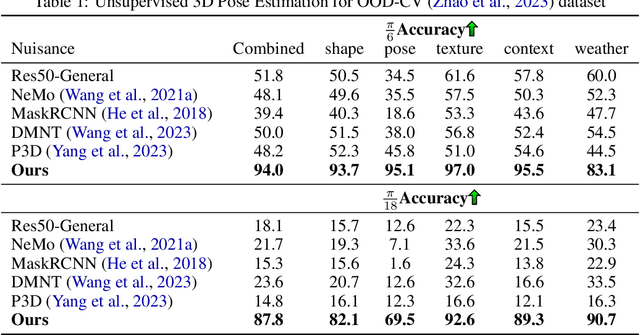
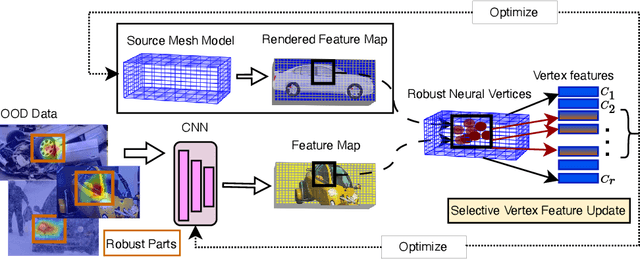
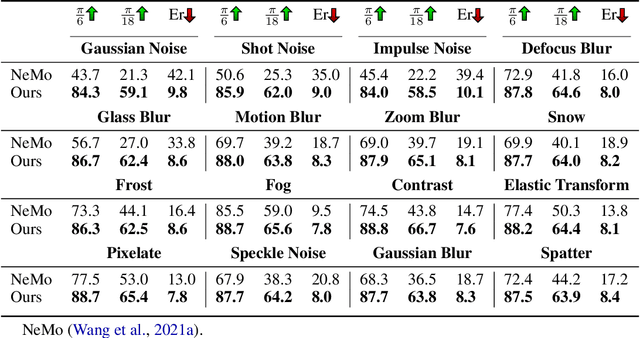
Abstract:We consider the problem of source-free unsupervised category-level pose estimation from only RGB images to a target domain without any access to source domain data or 3D annotations during adaptation. Collecting and annotating real-world 3D data and corresponding images is laborious, expensive, yet unavoidable process, since even 3D pose domain adaptation methods require 3D data in the target domain. We introduce 3DUDA, a method capable of adapting to a nuisance-ridden target domain without 3D or depth data. Our key insight stems from the observation that specific object subparts remain stable across out-of-domain (OOD) scenarios, enabling strategic utilization of these invariant subcomponents for effective model updates. We represent object categories as simple cuboid meshes, and harness a generative model of neural feature activations modeled at each mesh vertex learnt using differential rendering. We focus on individual locally robust mesh vertex features and iteratively update them based on their proximity to corresponding features in the target domain even when the global pose is not correct. Our model is then trained in an EM fashion, alternating between updating the vertex features and the feature extractor. We show that our method simulates fine-tuning on a global pseudo-labeled dataset under mild assumptions, which converges to the target domain asymptotically. Through extensive empirical validation, including a complex extreme UDA setup which combines real nuisances, synthetic noise, and occlusion, we demonstrate the potency of our simple approach in addressing the domain shift challenge and significantly improving pose estimation accuracy.
Learning Part Segmentation from Synthetic Animals
Nov 30, 2023



Abstract:Semantic part segmentation provides an intricate and interpretable understanding of an object, thereby benefiting numerous downstream tasks. However, the need for exhaustive annotations impedes its usage across diverse object types. This paper focuses on learning part segmentation from synthetic animals, leveraging the Skinned Multi-Animal Linear (SMAL) models to scale up existing synthetic data generated by computer-aided design (CAD) animal models. Compared to CAD models, SMAL models generate data with a wider range of poses observed in real-world scenarios. As a result, our first contribution is to construct a synthetic animal dataset of tigers and horses with more pose diversity, termed Synthetic Animal Parts (SAP). We then benchmark Syn-to-Real animal part segmentation from SAP to PartImageNet, namely SynRealPart, with existing semantic segmentation domain adaptation methods and further improve them as our second contribution. Concretely, we examine three Syn-to-Real adaptation methods but observe relative performance drop due to the innate difference between the two tasks. To address this, we propose a simple yet effective method called Class-Balanced Fourier Data Mixing (CB-FDM). Fourier Data Mixing aligns the spectral amplitudes of synthetic images with real images, thereby making the mixed images have more similar frequency content to real images. We further use Class-Balanced Pseudo-Label Re-Weighting to alleviate the imbalanced class distribution. We demonstrate the efficacy of CB-FDM on SynRealPart over previous methods with significant performance improvements. Remarkably, our third contribution is to reveal that the learned parts from synthetic tiger and horse are transferable across all quadrupeds in PartImageNet, further underscoring the utility and potential applications of animal part segmentation.
Animal3D: A Comprehensive Dataset of 3D Animal Pose and Shape
Aug 22, 2023



Abstract:Accurately estimating the 3D pose and shape is an essential step towards understanding animal behavior, and can potentially benefit many downstream applications, such as wildlife conservation. However, research in this area is held back by the lack of a comprehensive and diverse dataset with high-quality 3D pose and shape annotations. In this paper, we propose Animal3D, the first comprehensive dataset for mammal animal 3D pose and shape estimation. Animal3D consists of 3379 images collected from 40 mammal species, high-quality annotations of 26 keypoints, and importantly the pose and shape parameters of the SMAL model. All annotations were labeled and checked manually in a multi-stage process to ensure highest quality results. Based on the Animal3D dataset, we benchmark representative shape and pose estimation models at: (1) supervised learning from only the Animal3D data, (2) synthetic to real transfer from synthetically generated images, and (3) fine-tuning human pose and shape estimation models. Our experimental results demonstrate that predicting the 3D shape and pose of animals across species remains a very challenging task, despite significant advances in human pose estimation. Our results further demonstrate that synthetic pre-training is a viable strategy to boost the model performance. Overall, Animal3D opens new directions for facilitating future research in animal 3D pose and shape estimation, and is publicly available.
Understanding Catastrophic Forgetting and Remembering in Continual Learning with Optimal Relevance Mapping
Feb 22, 2021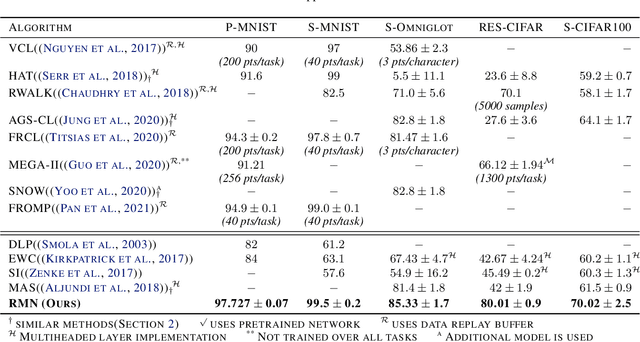
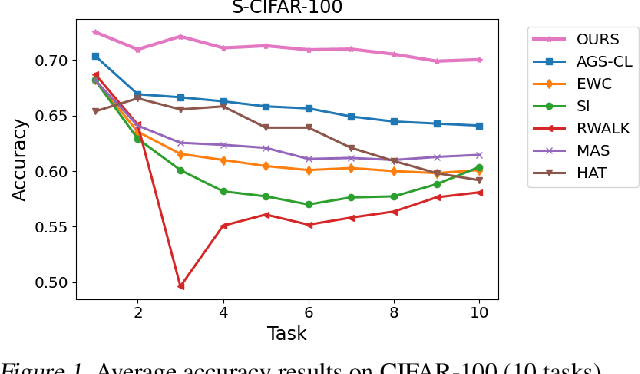
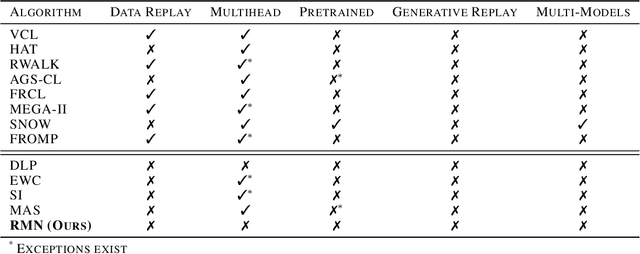
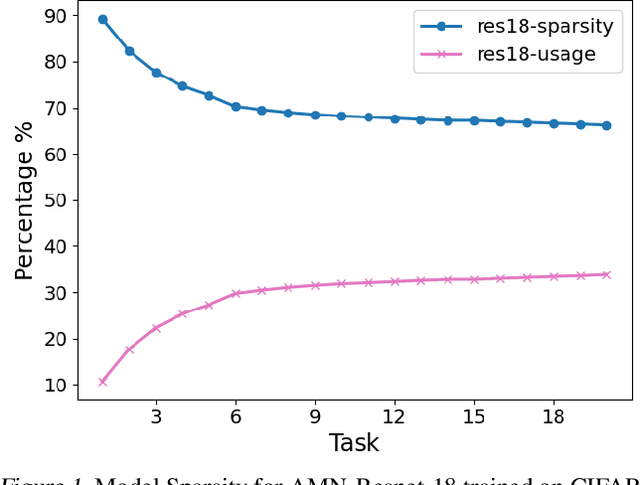
Abstract:Catastrophic forgetting in neural networks is a significant problem for continual learning. A majority of the current methods replay previous data during training, which violates the constraints of an ideal continual learning system. Additionally, current approaches that deal with forgetting ignore the problem of catastrophic remembering, i.e. the worsening ability to discriminate between data from different tasks. In our work, we introduce Relevance Mapping Networks (RMNs) which are inspired by the Optimal Overlap Hypothesis. The mappings reflects the relevance of the weights for the task at hand by assigning large weights to essential parameters. We show that RMNs learn an optimized representational overlap that overcomes the twin problem of catastrophic forgetting and remembering. Our approach achieves state-of-the-art performance across all common continual learning datasets, even significantly outperforming data replay methods while not violating the constraints for an ideal continual learning system. Moreover, RMNs retain the ability to detect data from new tasks in an unsupervised manner, thus proving their resilience against catastrophic remembering.
 Add to Chrome
Add to Chrome Add to Firefox
Add to Firefox Add to Edge
Add to Edge